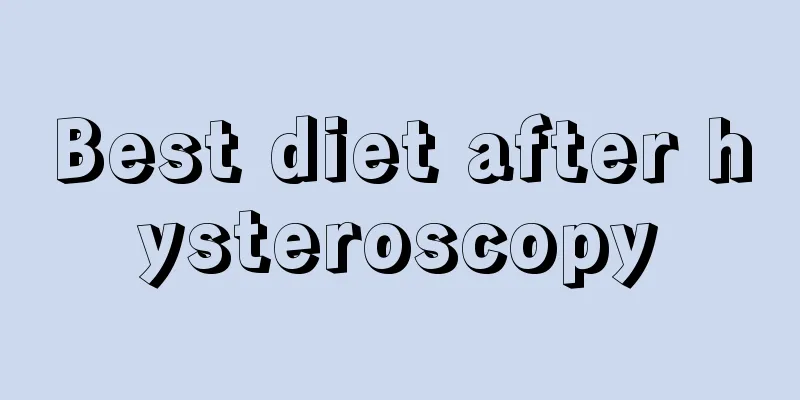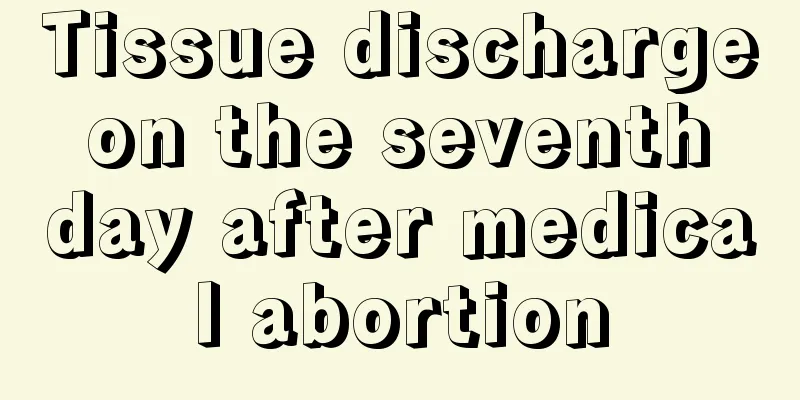Best diet after hysteroscopy

|
When there are symptoms such as irregular menstruation, menorrhagia, scanty menstrual bleeding, irregular menstrual cycle, uterine fibroids, uterine flesh, etc., our first choice of surgical treatment is hysteroscopy. Hysteroscopy is a new minimally invasive gynecological treatment technology. It uses the front side of the scope to enter the uterine cavity and has the effect of enlarging the observed area. What is the best diet after hysteroscopy? 1. Generally, after recovering from hysteroscopy, patients should be able to resume eating. First, drink some warm water. If there is no discomfort, they can start to eat liquid food (such as rice porridge). The next day, they can resume their normal diet. Because the healing of the wound requires protein, high-protein foods (such as fish, lean meat, eggs...) should be consumed to speed up the healing of the wound, and irritating foods should be avoided to prevent irritating gastric juice secretion and causing gastrointestinal discomfort (such as chili peppers, cigarettes, oil, coffee). 2. The biggest difference between laparoscopic surgery and general open surgery is that carbon dioxide needs to be infused during the operation to produce pneumoperitoneum for convenient operation. Therefore, it is easy for residual carbon dioxide gas to remain in the abdominal cavity after the operation. Therefore, the diet after laparoscopy should increase the intake of vegetables and high-fiber fruits, and avoid foods that cause bloating, such as sweet potatoes, beans, onions, etc. This can reduce the discomfort caused by abdominal distension after surgery. 3. Eat less spicy spices, soda, alcohol and other foods that promote gastric acid secretion. Gastric acid will stimulate the contraction of the gallbladder and increase the formation of stones. 4. Take three meals at fixed times from morning to night. When bile metabolism is irregular, the bile in the gallbladder is very easy to coagulate into stones. 5. Dietary fiber has the effect of lowering blood cholesterol. The diet after laparoscopic surgery should increase the intake of vegetables and fruits and high-fiber fruits such as black rice, germ rice, vegetables, fruits, algae, etc. 6. After laparoscopy, you should also limit your fat diet. High cholesterol can easily cause gallstones. You should limit the intake of foods rich in animal fat, such as eggs, cream, butter, liver, fish roe, etc. Paying more attention to your daily diet can prevent it from happening and achieve twice the result with half the effort. If you feel unwell, go to the hospital for a check-up at any time. |
<<: How long after hysteroscopy can I exercise?
>>: How to recover from looseness below
Recommend
Can I eat black wolfberry during breastfeeding?
As we all know, black wolfberry is a traditional ...
How long is the best rest time after abortion?
Many people wait until more than three months of ...
How to prevent nipple itching and pain
When women experience itchy or painful nipples, t...
Stomach discomfort during pregnancy, is it a boy or a girl?
After becoming pregnant, the expectant mother wil...
What are the symptoms of liver and kidney deficiency in women?
The liver and kidneys are relatively important or...
What to do if the vagina is itchy
In daily life, many female friends have encounter...
BV bacterial sialidase assay
There are many women around us who have suffered ...
Treatment of multiple cervical cysts
I believe that everyone is not too familiar with ...
What are the risks of induced abortion at five months of pregnancy?
Unexpected pregnancy is an inevitable problem in ...
What is the matter with the black spots on the leaves of Molan? How to deal with the black spots on the leaves of Molan?
As people's quality of life improves, more an...
What should women do if they have urinary pain? Don't deal with it blindly
Before introducing solutions to female urinary pa...
What are the conditions for upgrading from a junior college to a bachelor's degree? What is the procedure for adults to upgrade from a junior college to a bachelor's degree?
Competition in today's society is becoming in...
How to handle fresh salmon? How to remove the skin of salmon
Most of my friends like to eat salmon raw, which ...
How to treat postpartum loss of appetite
It is normal for many women to have no interest i...









